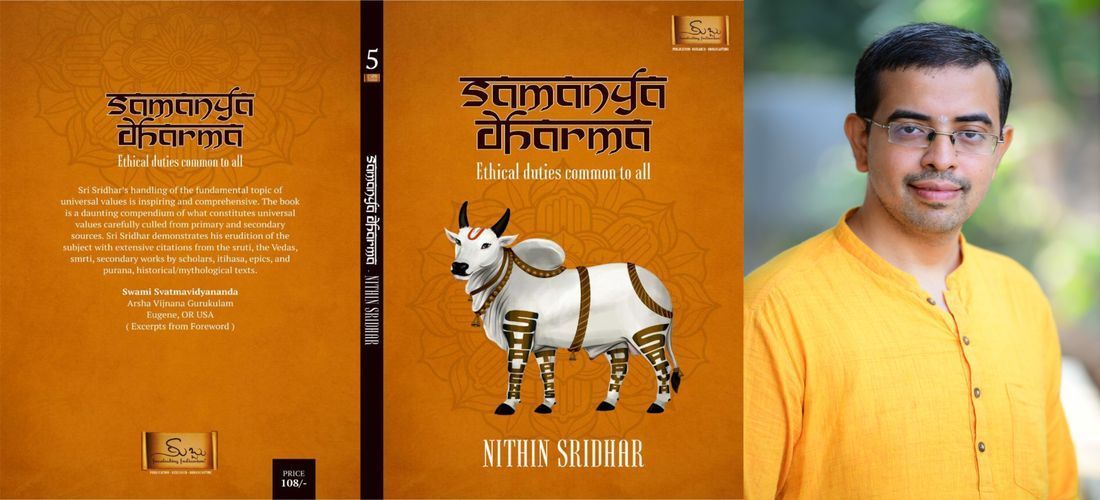Samanya Dharma by Nithin Sridhar
Samanya Dharma, Nithin Sridhar, 2019, Subbu Publications (Hubli), Second Print
According to Sanatana Dharma, there are righteous values and qualities that apply to every human irrespective of their time, place and stage in life. These are known as Samanya Dharma, as opposed to Vishesha dharma, those that can change depending on the circumstances. For example, while non-injury or non-violence (ahimsa) is valued, there are times when non-adherence to it is given scriptural sanction under certain conditions.
The author makes an interesting point early on in that if every human were allowed to have their own interpretation, then even adharmic individuals would use their own logic and opinions to defend what are essentially unethical and immoral actions. With this short booklet that could fit into a large pocket and runs 90 pages, Nithin Sridhar provides an impressive tour of what constitutes such righteous qualities and actions, from a wide range of sources including various puranas, Vedanta and itihaasa.
From personal experience, this reviewer has found that just knowledge of what are worthy qualities to develop is a useful starting point, as these take time and practice to nurture and develop fully. Chapter 16 in the Gita is one such chapter where Krishna clarifies to Arjuna what is the difference between positive and unbecoming dispositions. Just knowledge of what he points out as the right characters to have and develop will have an impact on the reader, and this booklet too will have such an effect. For example, speak truth, avoid untruth, and certainly do not resort to falsehood because it is pleasant (e.g. flattery).
The chapter on Yoga where it is described as “a state wherein the patterns of the mind has been removed or stilled, so that the “seer” (ie, Atman, the Witness) abides in his real nature” is an interesting description. Going through the 8 limbs (Ashtanga) with yama and niyama as foundations, Sridhar gives a concise explanation of how Samanya Dharma is an inseparable aspect of Yoga.
Personally, I would prefer that some of the original Sanskrit is not just transliterated but also provided in original Devanagiri, something that could be considered for subsequent prints, but this is a minor point. This booklet, which one can finish in 90 minutes, is a worthy read, a useful quick introduction or even a refresher. The author has done us a valuable service by giving us insight into what are universal values and attitudes based on the teachings of Sanatana Dharma.

